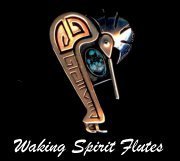| Frequently Asked Questions |
| Airy Sounding Flutes |
Question: Some of the flutes I own (Not any of yours though!) have an airy/breathy sound when they are played. Why is this and can it be corrected? Answer: There are a few reasons why a flute will sound airy or breathy when it is played but the most common one is due to an inappropriate size and/or shape of the True Sound Hole (embouchure). No matter how gently you blow into a flute there is a huge amount of air that passes over the TSH/embouchure and into the sound chamber that the instrument does not require. So, if you consider that Mother nature only requires a single, horizontal layer of air molecules to hit a cutting edge in order to create a note, the remainder of the air She does not need will pass over and into the instrument. The amount of air that is required to make the notes we want to hear is just a very minute fraction of the air being blown into the flute. Although this surplus air does not hit the cutting edge of the TSH/embouchure to form a note it will make a noise. This noise is known as 'White Noise'. White noise can be reduced by creating a TSH/embouchure to a specific length from the bridge towards the foot of the flute. If the length is too great, too much surplus air is drawn into the instrument which is amplified by the sound chamber. This is the 'airy/breathy' noise that you hear. Another, and equally important, way to reduce white noise is to ensure the cutting edge (the edge the air hits to produce a note) is sharp and not blunt. A blunt cutting edge will also create white noise and this occurs when the air that creates the note also bounces from the blunt cutting edge back towards the bridge and back again to the cutting edge. The pressure of this 'bouncing' air will not be sufficient to play a note but the instrument will amplify it as white noise. Unfortunately, there is no fix or cure for an airy/breathy flute other then to have major surgery done to the instrument so that a correct TSH/embouchure can be created. (See also 'Placement of the Block/Fetish') |


